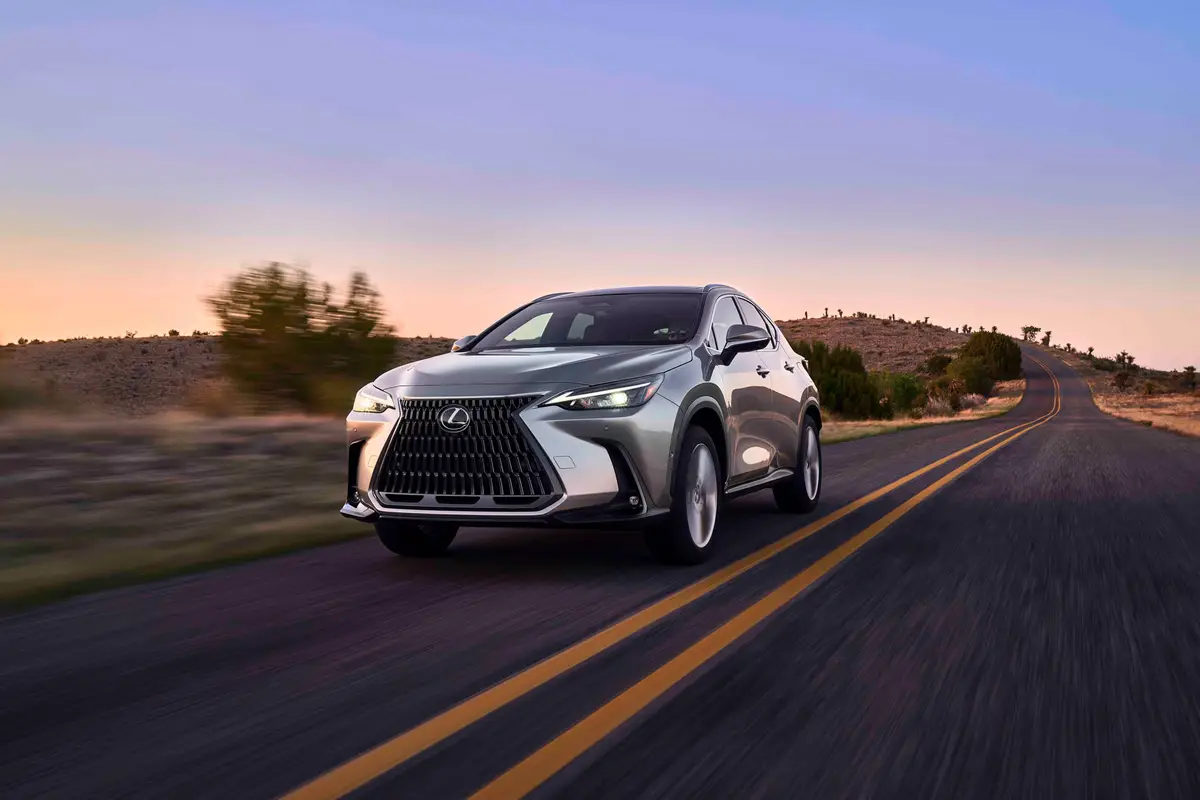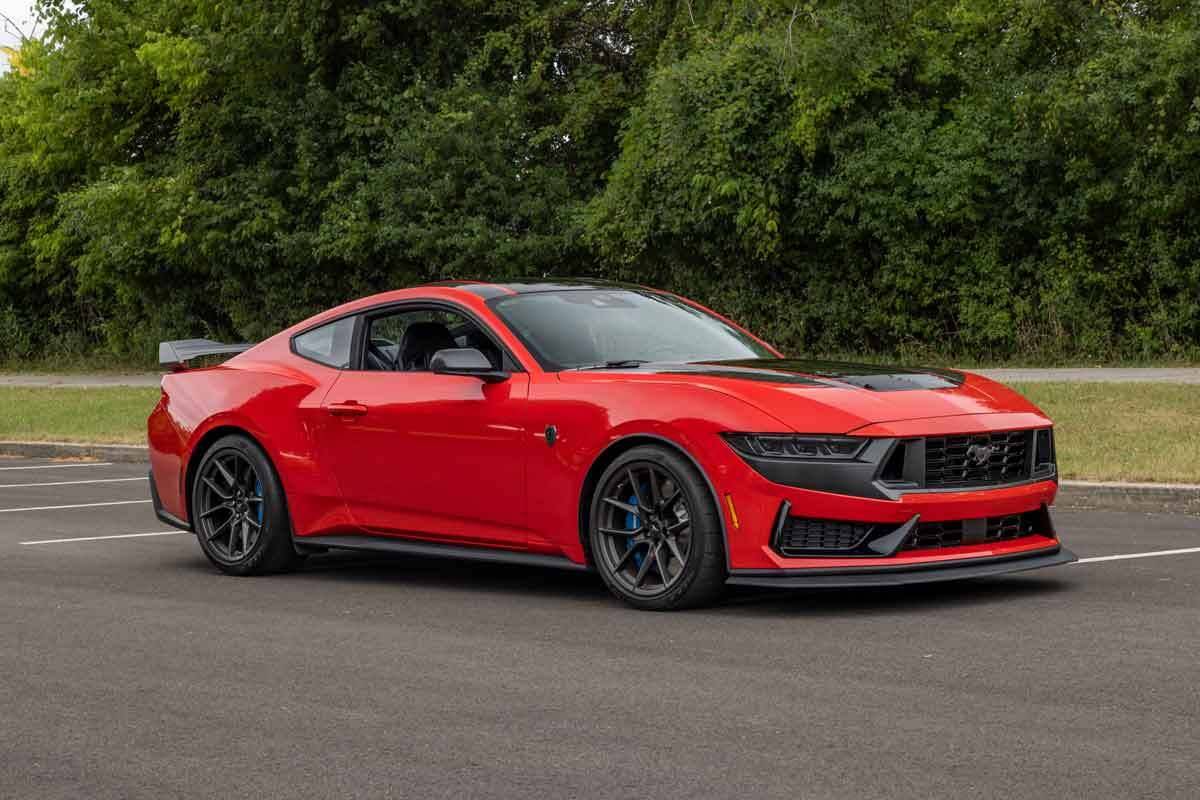chicagotribune.com's view
Those who own a ’94 Camaro can boast they’ll spit exhaust fumes onto the hood and into the grille of just about any ’94 Ford Mustang that dares to flexits muscle in the presence of the Chevy.
After all, that’s the price Mustang has to pay for its 5-liter V-8 coming up 65 horsepower short of Camaro’s 5.7-liter V-8.
But if you plan to drive the car longer than 5.5 seconds away from the light or farther than one-quarter mile with a challenger in the adjacent lane,Mustang is the car of choice.
With sports cars, the rule of thumb typically has been, “No pain, no gain.”You accept being brutalized in terms of harsh ride and handling, stiff and uncomfortable seats and poor if non-existent visibility for the “pleasure” of driving a high-performance, limited-edition number that few others will be able to drive.
“We wanted a car you could drive all day without being punished. We wanted a civilized car,” said Richard Miller, product design engineer for Ford’s Special Vehicle Operations team that transformed the all-new ’94 Mustang GT into the limited-edition ’94 Cobra, that falls 35-h.p. short of Camaro.
And that’s what Ford delivers in Cobra, a civilized performance car, even after adding a 240-h.p. version of the 200-h.p., 5-liter, V-8 that powers the regular Mustang.
We tested the 1994 Cobra convertible in Indy pace car replica attire. Only 6,000 Cobras will be built in 1994 and only 1,000 of those will be pace car models to commemorate Ford’s Mustang serving in that capacity in this year’s race. All pace car models will be convertibles.
The pace car Cobra’s juiced-up 5-liter is teamed only with a 5-speed manual, a unit that shifts very smoothly and very precisely into each gear. There’s no balkiness, no hesitation, no fumbling for the right number.
The 240-h.p. engine is lively and quick. However, the best is yet to come when Ford solves the packaging problem and slips a 32-valve, 4.6-liter V-8 under the hood in the 1996 model year. The 4.6 promises a bit more wallop, slightly better mileage (17 miles per gallon city/25 highway with the 5-liter)and a lower emissions reading.
Why not the 4.6 now? Ford redesigned the Mustang for 1994 and doesn’t need any gimmicks at the moment to sell all it can build. Ford planned to build 165,000 Mustangs for 1994 but has raised that target to 187,000 and is considering another boost to 200,000, Ford division general manager Ross Roberts told us.
“The car is selling phenomenally well and is the only car we have that’s outselling the Explorer sport-utility vehicle,” he said.
To celebrate the newly unveiled 1994 Ford Mustang Cobra’s arrival in showrooms as well as at the track, and to commemorate the Mustang’s 30th year in the U.S. market, Ford turned the media loose in a handful of Cobra droptopsthrough the Indiana countryside, including a journey through Bean Blossom on the way to Gnaw Bone, hamlets so tiny they’ve never see n a Cobra before-and probably not even a garden snake.
The Cobra convertible is special and not just because only 1,000 will be built as pace car replicas. The problem with so many convertibles is that theysqueak and rattle, shimmy and shake. It’s as if, when the top comes off, the spine is discarded with it. Mustang convertibles in the past seemed to be heldtogether with putty and were known for resembling a bowl of jelly on the road.
With the Cobra convertible, you no longer have to accept mediocre quality to enjoy driving with the top down. Cobra is solid and rigid and, therefore, quiet.
Our test drive took us over a variety of roadways-a few straightaways, lotsof curves, several steep hills, numerous sharp corners. The Cobra convertible took on each. If you took same course in a 5-year-old Mustang convertible, you’d have to turn the radio up to camouflage the sound of flexing metal. You’d dip or tip in turns and sway in corners.
The Cobra has abo e-average road manners and clings to the pavement. You accelerate into and out of corners rather than being forced to tiptoe until you get solid footing on a straightaway.
The 17-inch unidirectional performance tires provide sure grip. The only drawback is that you’ll need a set of all-seasons in reserve if you drive in the Snow Belt.
Steering is very precise. The suspension doesn’t jar occupants. The driver feels in total control. The front anti-roll bar was made smaller, and the rearanti-roll bar larger, than the Mustang GT, on which Corba is based. Also, linear rate springs replaced the stiffer variable rate springs from the GT to soften the ride. Because of all these factors, Cobra has less understeer than the GT.
Understeer is that sensation you get when you turn the wheel and the car doesn’t respond, a warning that you are overdriving the car’s capabilities. Understeer is the warning you need to back off. Ford figures Cobra will attract drivers who know their limits and the car’s without the need for understeer to serve notice.
No pain, yet you gain. Cobra is a performance car, at home on the street orat the track, but also potentially one of the safest on the road. Anti-lock brakes and dual air bags are standard. Traction control is coming, but not now, to hold the price down.
Having just driven a Camaro Z28 convertible (Cartalk, April 17), it was easy to draw a comparison between the two. The Z28 has more power, the Cobra has more appeal. The Z28 is more potent off the line, but the Cobra allows youto be aggressive start to finish.
Cobra has wider, softer, yet more supportive seats that are more comfortable over long distances than the Z28’s, yet hold driver and passenger more firmly in place in maneuvers.
The big difference between the two cars-Z28 versus Cobra convertibles-is that Cobra provides the visibility the Z28 lacks. The Cobra windshield is lessraked so you see better. There are side rear windows to provide viewing space when pulling out to pass or backing into a parking place. The Z28 has no side rear windows and the canvas top wraps so far around that passing and parking become an adventure-that only the body shop will enjoy.
Also, Cobra has a large glass rear window that’s easy to see out of, and the Z28 has a tiny glass window that gives the impression you are looking out a tunnel.
Then, too, Cobra features a one-piece vinyl cover to slip over the top onceit has motored down. The Z28 has a three-piece plastic jigsaw-puzzle cover youneed to fasten over the retracted top.
General Motors folks said with its three-piece cover in place, it could hold up to a 401-pound homecoming queen. The Ford folks said with its vinyl cover in place, the Cobra will hold one winner of the Indy 500 in a parade lap. It is as unlikely for a 401-pounder to win a crown, as it is a 401-pound driver to win Indy. Suffice it to say the tops are adequate to hold some weight.
What the two cars share is quiet in the passenger cabin. The canvas tops are secured tightly and there is little or no wind noise, no fluttering of thetop when it’s up and the windows are down. In the cabin, it’s about as quiet as if you were in a hardtop coupe.
Base price of the Mustang Cobra Pace Car is $26,845. To distinguish it fromthe regular Mustang GT convertible, you’ll find metal Cobra logos on the frontquarter panels as well as the appropriate decals boasting of the race and Cobra’s pace car status. However, the decals will come in a separate box. Mostbuyers will be collectors and most of them don’t want to take any chances withthe decal work being bruised. There are reports of some dealers demanding $5,000 over list for the 1,000 cars that will be built and sold.
We would suspect that most of those 1,000 Cobra pace car replicas will be stored on blocks. That’s a shame because Cobra is the best Mustang Ford has built in the last 30 ears. And when Ford adds traction control and the 32-valve, V-8 it can only get better.
Latest news



